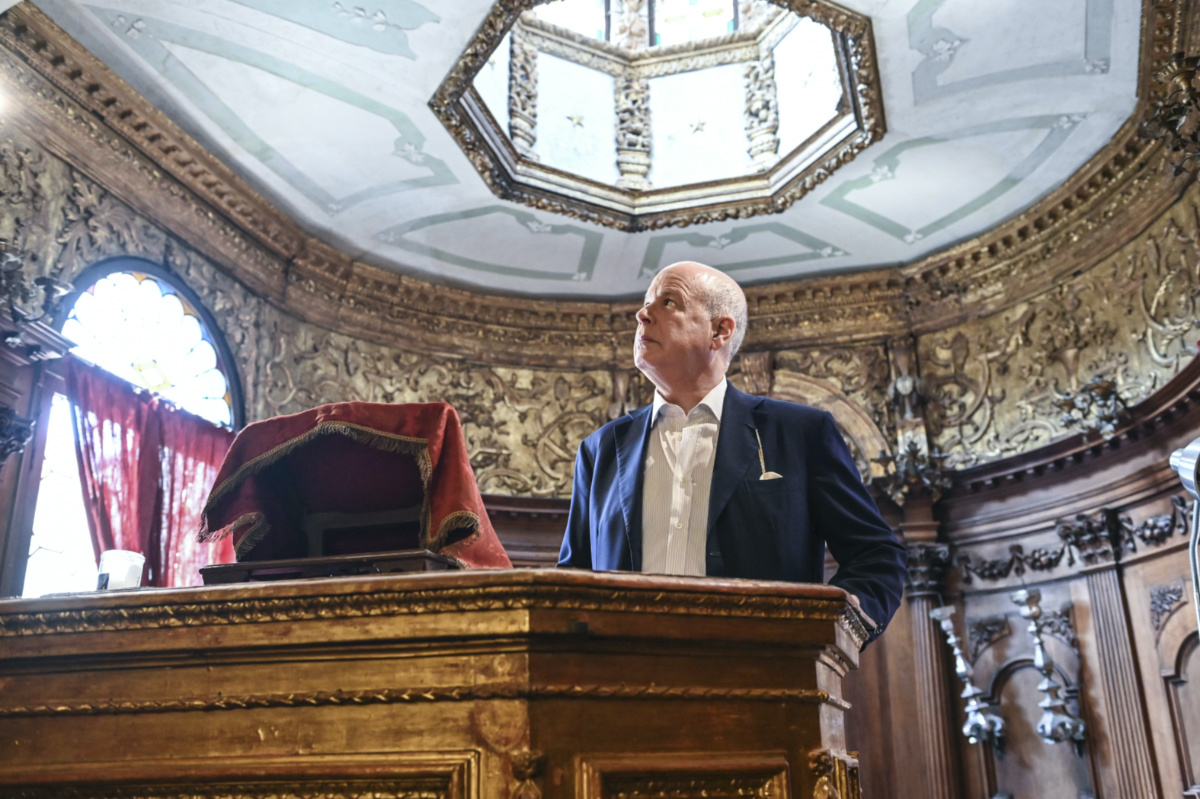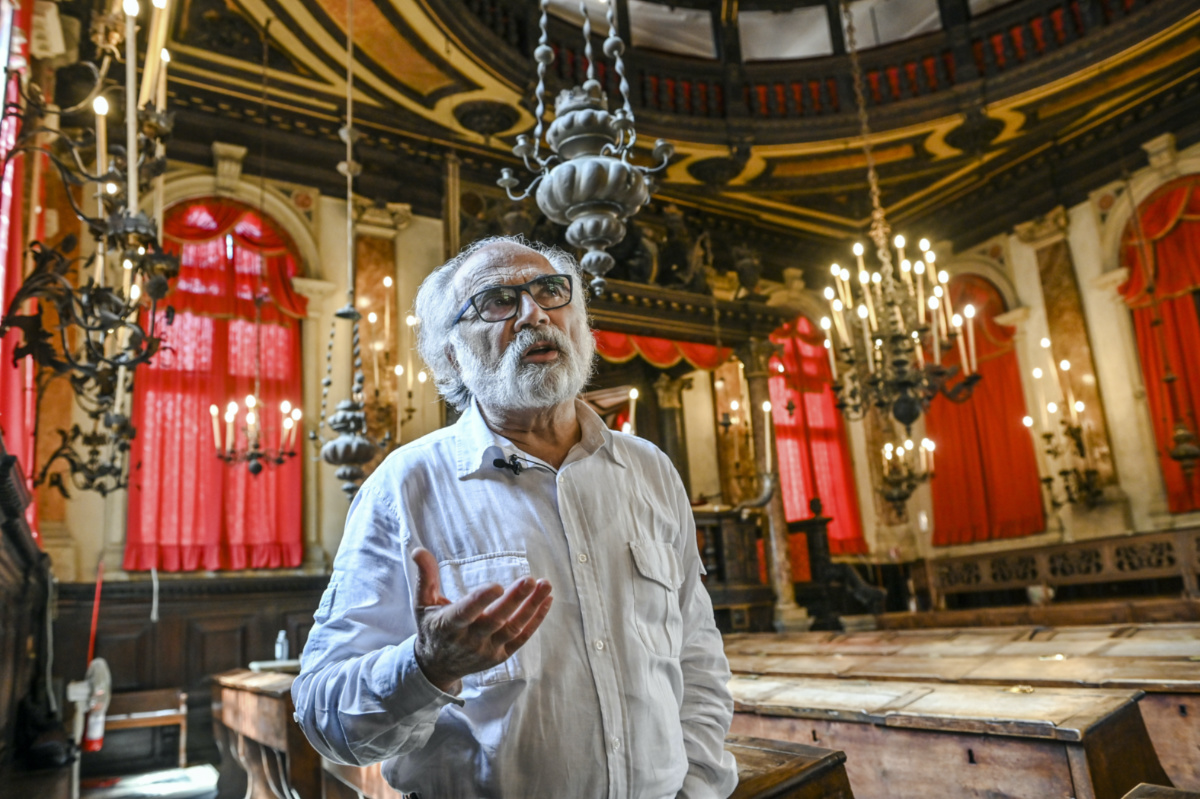Venice, Italy
AP
Venice’s Jewish ghetto is considered the first in Europe and one of the first in the world, and a new effort is underway to preserve its 16th-century synagogues for the Jews who have remained and tourists who pass through.
For nearly two years, restorers have been peeling away paint and discovering the original foundations of three of the ghetto’s synagogues, which are considered the only Renaissance synagogues still in use, art historian David Landau said.

Art historian David Landau stands in the 1531-32 Canton Schola Synagogue in Venice, northern Italy, on Wednesday, 1st June. Landau is spearheading the fundraising effort to restore Venice’s synagogues and nearby buildings both for Venice’s small Jewish community and for tourists who can visit them on a guided tour through the Jewish Museum of Venice. PICTURE: AP Photo/Chris Warde-Jones.
Landau is spearheading the fundraising effort to restore the synagogues and nearby buildings both for Venice’s small Jewish community, which numbers around 450 people, and for tourists who can visit them on a guided tour through the Jewish Museum of Venice.
“I was really deeply offended by the state of the synagogues,” said Landau, a Renaissance specialist who bought a home in Venice 12 years ago. “I felt that the synagogues were in very bad condition. They had been altered beyond recognition over the centuries, and needed to be kind of cared for and loved.”
He has secured about €5 million to date and expects workers can complete the restoration process by the end of 2023 if the rest of the funding comes through, although the original outstanding €4 million has now ballooned to €6 million because of soaring building costs.
Venice’s ghetto dates from 1516, when the republic forced the growing numbers of Jews into the district where the old foundries, or “geti” as they were known, had been located. The area, which was locked down at night, became what is considered Europe’s first ghetto and remains the hub of Venice’s Jewish community in the Cannaregio area.
The first synagogue dates from 1528 and was built by German Ashkenazi Jews. Others followed and served different groups, including one for Spanish Sephardic Jews and one for Italian Jews.
None is visible from the street, as strict rules imposed by Venice’s rulers didn’t allow Jews to practice their faith openly. All the synagogues are hidden away on the top floors of seemingly normal buildings that on the lower levels held cramped living spaces for Jewish families.

Dario Calimani, the president of the Jewish Community of Venice, poses inside the Spanish Schola Synagogue in Venice, northern Italy, on Wednesday, 1st June. The Spanish Schola, founded about 1580, but rebuilt in the first half of the 17th century, is the biggest of the Venetian synagogues. Venice’s Jewish ghetto is considered the first in Europe and one of the first in the world, and a new effort is underway to preserve its 16th century synagogues for the Jews who have remained and tourists who pass through. PICTURE: AP Photo/Chris Warde-Jones.
The synagogues have remained operational continuously, except for the years of World War II during the German occupation.
The head of Venice’s Jewish community, Dario Calimani, said the restoration project was necessary both to maintain the religious and cultural life of Venice’s Jews today and to preserve the community’s history.
“They are a testimony to the life that it was, to the history of our community, small community,” he said.






